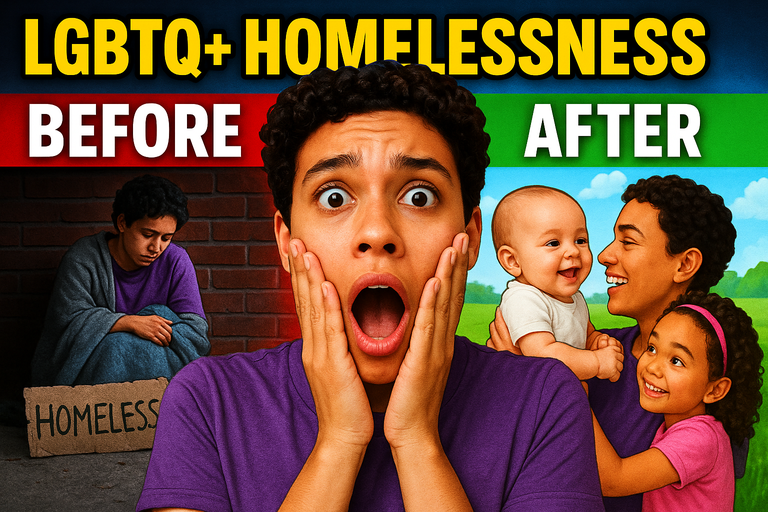
Imagine dreaming of starting a family, but not knowing where you'll sleep tonight. For thousands of LGBTQ+ young adults in New York City, this is more than a hypothetical—it's an everyday reality. And if you think safety is their only challenge, think again. Their reproductive futures are hanging in the balance, caught between survival and self-determination.
A recent study published in Social Work in Public Health dives deep into the complex experiences of sexual agency among LGBTQ+ youth experiencing homelessness in NYC. Professor Spring Cooper and her team didn’t just look at statistics—they listened to real stories about resilience and the raw, daily negotiations involved in sex, safety, and survival.
So, what does any of this have to do with fertility, preconception, or the road to parenthood? More than you might think.
Homelessness and Fertility: An Invisible Intersection
When we picture young adults planning families, we tend to imagine stability, comfort, and supportive networks. But for LGBTQ+ youth facing housing insecurity, these foundational supports are missing. The study highlights how these young people must constantly weigh risks, from exposure to violence, mental health stress, and lack of privacy, to inadequate access to healthcare.
But here's the twist: Even within these challenges, many LGBTQ+ youth maintain hope for a future that includes starting a family. Yet, barriers to fertility care, safe conception options, and affirming resources are immense—not only logistically, but emotionally and culturally.
Why Fertility Planning is a Radical Act
For LGBTQ+ people, especially those who are homeless, the dream of becoming a parent can feel almost rebellious—an act of hope in the face of adversity. But there's a lot standing in the way:
- Unsafe Environments: Privacy? Practically non-existent. Safe, hygienic spaces for personal care and insemination? Rare.
- Discrimination in Healthcare: Many face stigma from clinicians, making it difficult to access information or supportive services for reproductive health and fertility.
- Financial Constraints: Fertility treatments are expensive, and most are geared toward cisgender, housed, heterosexual couples.
The big question: How do we make fertility and parenthood possible for everyone—no matter their background or living situation?
Access, Agency, and At-Home Solutions
It’s easy to focus on what’s lacking, but let’s switch gears and talk about solutions.
Organizations are stepping up, offering resources and tools that meet people where they are. One innovative approach is the development of at-home insemination kits. Products like MakeAMom’s reusable insemination systems offer a new kind of accessibility—designed for privacy, sensitivity, and discretion.
- No Clinic Required: For those facing stigma or who simply need privacy, being able to try at home can make all the difference.
- Low-Cost, Reusable Kits: With financial insecurity high among homeless and housing-unstable populations, reusability matters. MakeAMom’s kits are cost-effective, avoiding the need for repeated expensive purchases.
- Sensitive Designs: The BabyMaker kit, for example, is designed for users with sensitivities or conditions like vaginismus, which is especially relevant for trauma survivors or those with medical complexities—prevalent among vulnerable populations.
- Discreet Packaging: When every detail matters, plain packaging ensures safety and privacy. No one needs to know what’s in the box.
Building Lifelines: The Power of Supportive Networks
Tools can help, but connection truly sustains hope. The CUNY-SPH study underlines the importance of affirming, knowledgeable support networks—from community programs and caseworkers to online groups and peer mentors. LGBTQ+ youth fare best when they have access not only to practical resources for fertility, but also to spaces where their identities and dreams are validated.
Here are ways anyone can help foster these lifelines:
- Amplify inclusive resources—share websites, hotline numbers, and affirming providers.
- Advocate for broader healthcare access, so insemination and fertility care are available to everyone, not just the privileged few.
- Support community organizations that fight housing insecurity and uplift LGBTQ+ futures.
What’s Next for Inclusive Fertility?
The landscape is changing, but not fast enough. As we talk more openly about fertility and family-building, we have to keep the most vulnerable in the conversation. Whether it’s reshaping healthcare, supporting inventive products like MakeAMom’s, or just reaching out to someone who needs an ally—the future of fertility should be accessible, affirming, and inclusive.
Let’s challenge ourselves: How can we, as individuals and as a community, break down the barriers between homelessness, queerness, and reproductive hopes? Share your thoughts, your resources, or your own story below. Together, we can ensure that everyone has a chance to conceive their dreams—no matter where they start.